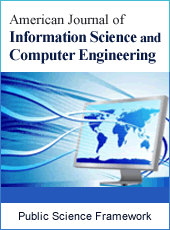American Journal of Information Science and Computer Engineering
Articles Information
American Journal of Information Science and Computer Engineering, Vol.3, No.4, Jul. 2017, Pub. Date: Jun. 14, 2017
Impact of Avoiding Non-functional Requirements in Software Development Stage
Pages: 52-55 Views: 2471 Downloads: 3332
[01]
Muhammad Shahid, Centre of Excellence in Science and Applied Technologies (CESAT), Islamabad, Pakistan.
[02]
Khawaja Awais Tasneem, Centre of Excellence in Science and Applied Technologies (CESAT), Islamabad, Pakistan.
Non-functional requirements such as security, performance, usability, scalability and maintenance define the quality attributes or constraints of software to be developed. During the development of software, they are as critical as their counterpart functional requirements because they ensure the quality of software product. Avoiding non-functional requirements or constraints during the requirements engineering process could lead to the failure of software projects. In order to investigate this problem, we have reviewed several published research papers. Based on the study of previously published research this paper gives an overview of impact of avoiding nonfunctional requirements of software project during requirements engineering process. In this research we will also give our recommendations for the improvement of requirements engineering practices.
Non-functional Requirements, Requirements Engineering, Software Development models, Security, Scalability, Maintainability
[01]
Somerville, I. (2015). Software Engineering, Addison Wesley, Harlow, England, 10th edition.
[02]
Kazman, R., & Bass, L. (1994). Toward deriving software architectures from quality attributes (No. CMU/SEI-94-TR-10). CARNEGIE-MELLON UNIV PITTSBURGH PA SOFTWARE ENGINEERING INST.
[03]
Boehm, Barry. "Anchoring the software process." IEEE software 13.4 (1996): 73-82.
[04]
Doyle, William P. "Business modeling, software engineering and prototyping method and apparatus." U.S. Patent No. 5,233,513. 3 Aug. 1993.
[05]
Boehm, Barry. "A view of 20th and 21st century software engineering." Proceedings of the 28th international conference on Software engineering. ACM, 2006.
[06]
Paulk, Mark C. (2001) Extreme programming from a CMM perspective. IEEE software 18(6), 19-26.
[07]
Cysneiros, Luiz Marcio, and Julio Cesar Sampaio do Prado Leite. (2004) "Nonfunctional requirements: From elicitation to conceptual models." IEEE Transactions on Software Engineering 30(5), 328-350.
[08]
Somerville, I. (2010). Software Engineering, Addison Wesley, Harlow, England, 9 Edition.
[09]
Deutschland, B. (2004). V-Modell® XT.
[10]
S. Robertson and J. Robertson, (1999), Mastering the Requirements Process (Addison-Wesley).
[11]
De Troyer, O. M. F., & Leune, C. J. (1998). WSDM: a user centered design method for Web sites. Computer Networks and ISDN systems, 30(1-7), 85-94.
[12]
Schwaber, Ken. (1997), Scrum development process. Business Object Design and Implementation. Springer London, pp.117-134.
[13]
Karmokar, S., H., & Tan, F. B. (2016), Using Multidisciplinary Design Principles to improve the Website Design Process. Pacific Asia Journal of the Association for Information Systems, 8(3).
[14]
W. W. Royce (1987), Managing the Development of Large Software systems: Concepts and Techniques, Proceedings of the 9th International Conference on Software Engineering (ICSE), pp. 328-338.
[15]
Alashqar, A. M., Elfetouh, A. A., &El-Bakry, H. M. (2015). Evaluating User Interface Management Systems based on Quality Attributes and Unit Operations. International Journal of Computer Applications 116(9).
[16]
Trupti Suryawanshi (2016), Modeling of Nonfunctional Requirements for Agile Development Processes, Vol-4, IJITE, 2016.
[17]
Chandra, V. (2015), Comparison between Various Software Development Methodologies, International Journal of Computer Applications, 131(9), 7-10.

ISSN Print: 2381-7488
ISSN Online: 2381-7496
Current Issue:
Vol. 7, Issue 3, September Submit a Manuscript Join Editorial Board Join Reviewer Team
ISSN Online: 2381-7496
Current Issue:
Vol. 7, Issue 3, September Submit a Manuscript Join Editorial Board Join Reviewer Team
| About This Journal |
| All Issues |
| Open Access |
| Indexing |
| Payment Information |
| Author Guidelines |
| Review Process |
| Publication Ethics |
| Editorial Board |
| Peer Reviewers |


